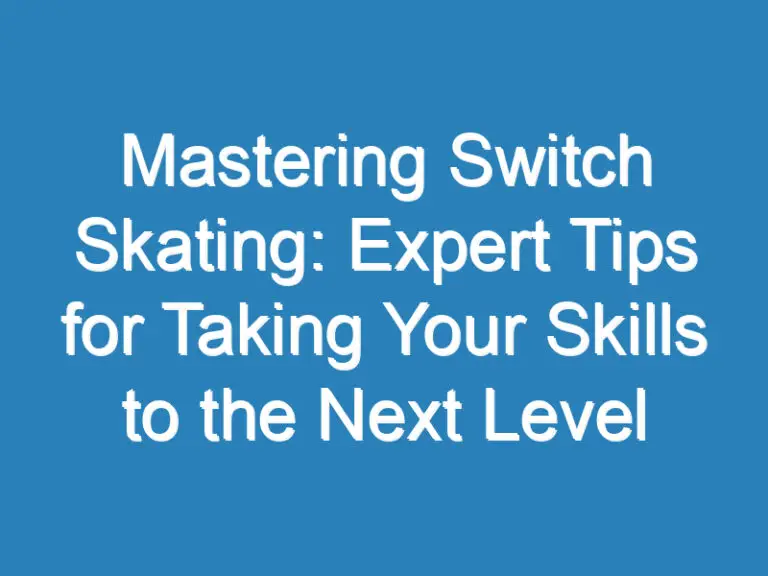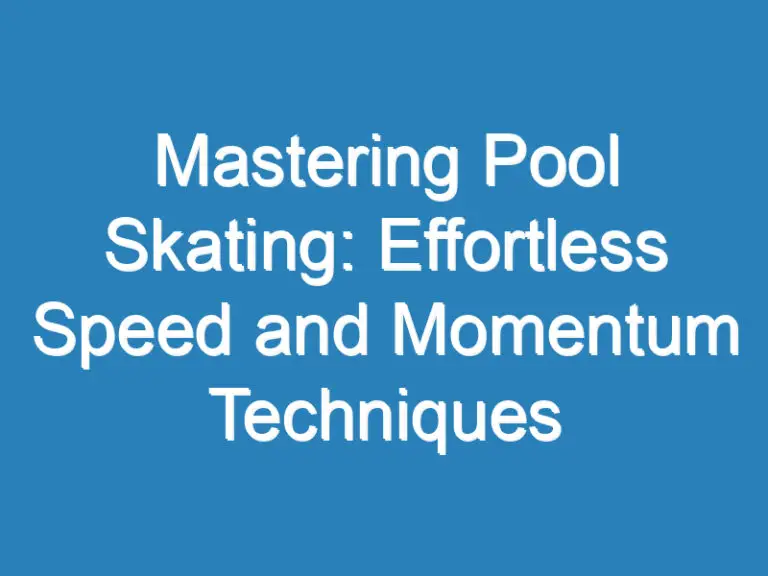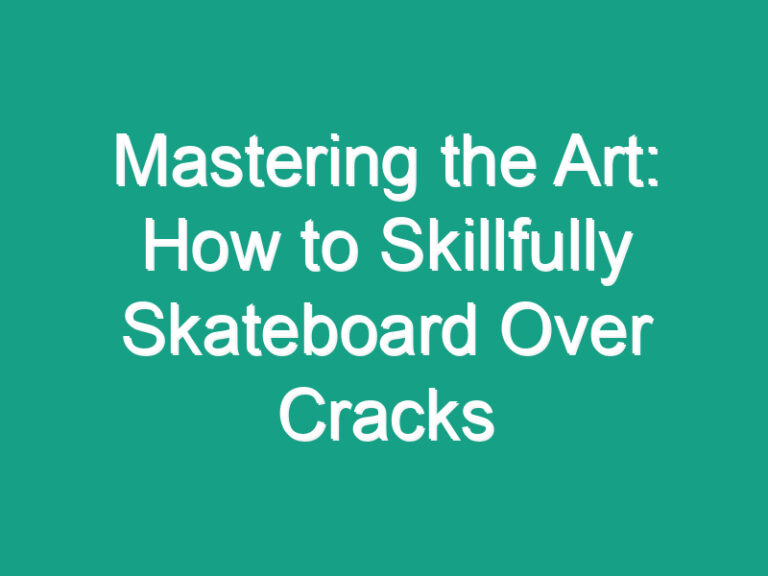
Are you ready to take your longboarding skills to the next level? Drifting on a longboard is an exhilarating technique that allows you to carve through turns with style and finesse. In this guide, I’ll walk you through the steps on how to master the art of drifting on a longboard like a pro.
As an experienced longboarder, I’ve spent countless hours perfecting my drifting technique and I’m excited to share my insights with you. From choosing the right setup to mastering the proper body positioning, I’ll cover everything you need to know to start drifting like a champ in no time.
Key Takeaways
- Choosing the right longboard setup is vital for successful drifting, including factors like deck shape, wheelbase, wheel hardness, truck type, and bushings.
- Selecting the proper wheels with considerations such as wheel diameter, contact patch, durometer, and lip profile can enhance your drifting experience.
- Mastering the basics of sliding, such as foot placement, weight distribution, carving technique, initiating the slide, controlling speed, and ensuring safety, is key to executing fluid drifts.
- Mastering body positioning and balance by focusing on stance, weight distribution, arm placement, and head position can help you achieve smooth and controlled slides.
- Consistent practice on smooth surfaces, gradual progression to more challenging terrains, experimenting with speeds and angles, and seeking feedback from experienced riders are essential for improving your drifting skills.
Choose the Right Longboard
When it comes to mastering the art of drifting on a longboard, choosing the right longboard is crucial. Here are some key factors to consider to make sure you have the best setup for your drifting sessions:
- Deck Shape: Opt for a drop-through or drop-down deck design for enhanced stability and control while drifting.
- Wheelbase: Select a longboard with a longer wheelbase to provide a more stable platform for drifting maneuvers.
- Wheel Hardness: Go for softer wheels with a durometer rating between 78A to 82A to improve traction and grip during slides.
- Truck Type: Use reverse kingpin trucks for better responsiveness and maneuverability when initiating and holding drifts.
- Bushings: Consider installing softer bushings to allow for smoother and more controlled turns while drifting.
Remember, the right longboard setup can make a significant difference in your drifting performance. Experiment with different combinations to find what works best for your style and preferences.
Select the Proper Wheels for Drifting
When selecting wheels for drifting, it’s crucial to consider the following factors to optimize your performance:
- Wheel Diameter: Opt for larger wheels as they provide more speed and momentum for fluid drifts.
- Contact Patch: Look for wheels with a wider contact patch for increased grip during slides.
- Durometer: Choose softer durometer wheels for better grip and smoother slides on various surfaces.
- Lip Profile: Wheels with rounded lips facilitate smoother transitions into slides and less grip in the initiation phase.
For drifting on longboards, wheels with a durometer range of 75A-85A are popular among riders for their balance of grip and slide. Experiment with different wheel setups to find the ideal combination that suits your drifting style best.
Remember, the right wheels can make a significant difference in your drifting experience, so don’t hesitate to try out various options to find what works best for you. Enjoy perfecting your drifting skills with the ideal wheel setup tailored to your preferences.
Learn the Basics of Sliding
Sliding on a longboard is an exhilarating skill that requires practice and technique. Mastering the basics of sliding is crucial for executing fluid drifts with control and finesse. Here are some essential tips to help you get started:
- Foot Placement: Positioning your feet correctly on the longboard is key to maintaining balance and stability while sliding. Place your front foot at a slight angle towards the nose of the board and your back foot on or near the tail for optimal control.
- Weight Distribution: Proper weight distribution plays a significant role in initiating and controlling slides. Shift your weight towards the direction you want to slide while keeping your knees bent to maintain stability.
- Carving Technique: Before attempting slides, practice carving turns to get a feel for how your board responds to shifting your weight and applying pressure to the edges.
- Initiating the Slide: To initiate a slide, shift your weight towards the back of the board while simultaneously applying pressure to the edges with your feet. Engage in a controlled carve and gradually increase the pressure to break traction and slide.
- Controlling Speed: Regulating your speed during a slide is crucial for safety and precision. Use your body positioning and carving technique to control the speed of the slide and adjust as needed to maintain balance.
- Safety First: Always wear appropriate safety gear, including a helmet, gloves, and knee pads, when practicing sliding on a longboard. Start slow, focus on mastering the basics, and gradually progress to more advanced sliding techniques.
With dedication and practice, you’ll soon feel confident and comfortable executing smooth slides on your longboard. Embrace the learning process and enjoy the thrill of drifting with finesse.
Mastering Body Positioning and Balance
When drifting on a longboard, mastering body positioning and balance is crucial for achieving smooth and controlled slides. Here are some key tips to optimize your technique:
- Stance: Ensure a comfortable and stable stance by bending your knees slightly and keeping your feet shoulder-width apart.
- Weight Distribution: Shift your weight towards the front of the board to initiate the slide, then gradually transfer weight to the back to maintain control.
- Arm Placement: Keep your arms outstretched to help with balance and stability while sliding.
- Head Position: Focus on looking where you want to go to guide your movements and maintain direction.
By fine-tuning body positioning and balance, you can enhance your ability to execute controlled drifts on a longboard.
Practice Makes Perfect
When it comes to mastering the art of drifting on a longboard, practice is key. The more time I spend honing my skills and familiarizing myself with the techniques involved, the more confident and proficient I become on the board. Here are some essential tips for effective practice sessions:
- Consistency is crucial. Set aside regular practice sessions to work on drifting techniques. Repetition helps solidify muscle memory and improve overall control.
- Start by practicing on smooth, flat surfaces before gradually moving on to more challenging terrains. This allows you to build a strong foundation and gain confidence in my abilities.
- Experiment with different speeds and angles to understand how they impact my drifts. This trial-and-error approach can help me discover what works best and refine my technique accordingly.
- Seek feedback from experienced riders or instructors. Their insights can provide valuable guidance on areas for improvement and help me overcome any obstacles I may face during my practice sessions.
By dedicating time and effort to consistent practice, I can sharpen my drifting skills and progress towards executing smooth and controlled drifts with confidence.
Conclusion
Mastering the art of drifting on a longboard requires dedication and practice. By committing to regular practice sessions, riders can enhance muscle memory and control. Starting on smooth surfaces and gradually progressing to more challenging terrains is key to building confidence and skill. Experimenting with different speeds and angles allows for a deeper understanding of drifting techniques. Seeking feedback from experienced riders or instructors can provide valuable insights for improvement. With consistent practice and a focus on skill development, riders can achieve smooth and controlled drifts with confidence. Remember, practice makes perfect in the world of longboard drifting.
Frequently Asked Questions
Q: Why is practice important in mastering drifting on a longboard?
A: Regular practice helps improve muscle memory and control, leading to smoother and more controlled drifts.
Q: Where should I start practicing drifting on a longboard?
A: Start on smooth surfaces to develop basic drifting skills before moving to more challenging terrains.
Q: How can I improve my drifting technique?
A: Experiment with different speeds and angles to enhance your drifting skills and master control.
Q: Should I seek feedback on my drifting progress?
A: Yes, seeking feedback from experienced riders or instructors can provide valuable insights for improvement.

Hi, This is Roasalin, I have loved Skating since my early childhood days, and here I share my experiences and tips for beginners who want to turn into pro skaters. I hope you find it useful. you can contact me here






